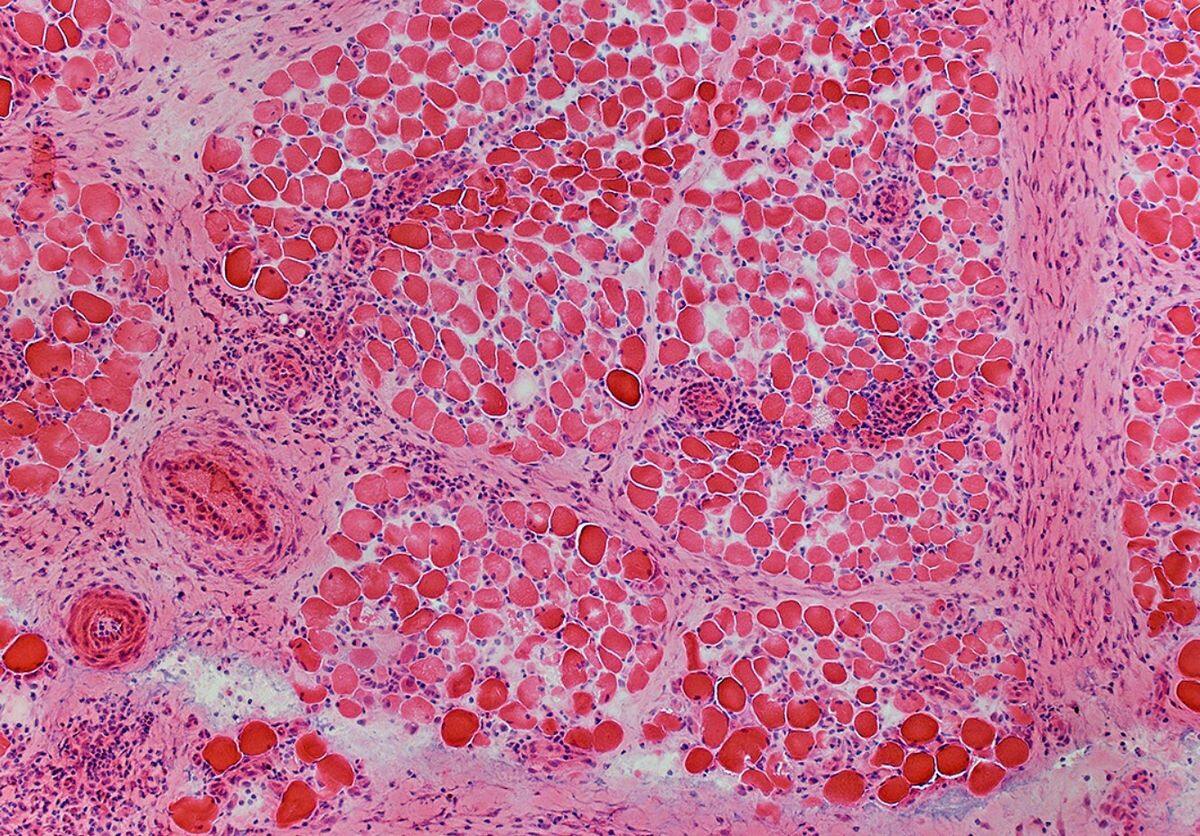
Tnf Receptor Associated Periodic Syndrome (TRAPS) is a rare genetic disorder that causes recurrent episodes of fever, abdominal pain, muscle pain, and skin rashes. TRAPS is caused by mutations in the TNFRSF1A gene, which encodes a receptor involved in inflammation regulation. These mutations lead to excessive inflammation, resulting in the symptoms seen in patients. TRAPS can be challenging to diagnose due to its rarity and the variability of symptoms. Treatment often involves medications to reduce inflammation and manage symptoms. Understanding TRAPS is crucial for those affected and their families, as early diagnosis and appropriate treatment can significantly improve quality of life.
Key Takeaways:
- TRAPS is a rare genetic disorder causing fever and inflammation. It's diagnosed through genetic testing and managed with medications and lifestyle adjustments. Research is ongoing for better treatments.
- Living with TRAPS involves avoiding triggers, staying active, seeking support, and staying informed. Exciting developments in gene therapy and clinical trials offer hope for future treatments.
Understanding TNF Receptor Associated Periodic Syndrome (TRAPS)
TRAPS is a rare genetic disorder that causes recurrent episodes of fever and inflammation. It affects various parts of the body and can lead to long-term complications if not managed properly. Let's dive into some fascinating facts about this condition.
- TRAPS stands for Tumor Necrosis Factor Receptor Associated Periodic Syndrome.
- It is an autoinflammatory disorder, meaning the immune system attacks the body without an infection or other clear cause.
- The condition is caused by mutations in the TNFRSF1A gene.
- TRAPS is inherited in an autosomal dominant pattern, meaning one copy of the altered gene is enough to cause the disorder.
- Symptoms often begin in childhood but can start at any age.
- Episodes of fever in TRAPS can last from days to weeks.
- Common symptoms include muscle pain, abdominal pain, and skin rashes.
- Conjunctivitis (inflammation of the eye) is a frequent symptom during flare-ups.
- Periorbital edema (swelling around the eyes) is another characteristic symptom.
- TRAPS can lead to amyloidosis, a condition where abnormal protein builds up in organs and tissues.
Diagnosing TRAPS
Diagnosing TRAPS can be challenging due to its rarity and the variability of symptoms. Here are some key facts about how this condition is identified.
- Diagnosis often involves genetic testing to identify mutations in the TNFRSF1A gene.
- Blood tests may show elevated levels of inflammatory markers like C-reactive protein (CRP) and erythrocyte sedimentation rate (ESR).
- A family history of similar symptoms can be a crucial clue in diagnosing TRAPS.
- Biopsies of affected tissues can sometimes help in diagnosis.
- Differential diagnosis is important to rule out other autoinflammatory or autoimmune diseases.
Treatment and Management of TRAPS
Managing TRAPS involves controlling symptoms and preventing complications. Here are some important aspects of treatment.
- Nonsteroidal anti-inflammatory drugs (NSAIDs) are often used to reduce fever and pain.
- Corticosteroids can help control severe inflammation during flare-ups.
- Biologic therapies targeting TNF, such as etanercept, are commonly used in treatment.
- Interleukin-1 inhibitors like anakinra may also be effective.
- Regular monitoring is essential to manage long-term complications like amyloidosis.
Living with TRAPS
Living with TRAPS requires ongoing care and lifestyle adjustments. Here are some insights into daily life with this condition.
- Patients often need to avoid triggers that can provoke flare-ups, such as stress or infections.
- Regular exercise and a healthy diet can help maintain overall well-being.
- Support groups and counseling can provide emotional support and practical advice.
- Patient education is crucial for understanding the condition and managing symptoms.
- Genetic counseling can help families understand the risks and implications of TRAPS.
Research and Future Directions
Research on TRAPS is ongoing, with scientists exploring new treatments and a better understanding of the disease. Here are some exciting developments.
- Gene therapy is being investigated as a potential future treatment.
- Clinical trials are testing new biologic drugs and other therapies.
- Researchers are studying the mechanisms of inflammation in TRAPS to find new targets for treatment.
- Patient registries are being developed to collect data and improve understanding of the disease.
- Advances in genetic research may lead to earlier diagnosis and better management strategies.
Final Thoughts on TNF Receptor Associated Periodic Syndrome
TNF Receptor Associated Periodic Syndrome (TRAPS) is a rare genetic condition that causes recurrent fevers, abdominal pain, and muscle aches. Understanding TRAPS helps in managing symptoms and improving quality of life. Early diagnosis is crucial for effective treatment. Genetic testing can confirm the presence of TRAPS and guide therapy choices. Medications like corticosteroids and biologics can reduce inflammation and control symptoms. Patients should work closely with healthcare providers to develop a personalized treatment plan. Support groups and online communities offer valuable resources and emotional support. Staying informed about the latest research and treatment options empowers patients and families. While TRAPS presents challenges, proper management can lead to a fulfilling life. Remember, knowledge is power when dealing with rare diseases.
Frequently Asked Questions
Was this page helpful?
Our commitment to delivering trustworthy and engaging content is at the heart of what we do. Each fact on our site is contributed by real users like you, bringing a wealth of diverse insights and information. To ensure the highest standards of accuracy and reliability, our dedicated editors meticulously review each submission. This process guarantees that the facts we share are not only fascinating but also credible. Trust in our commitment to quality and authenticity as you explore and learn with us.
